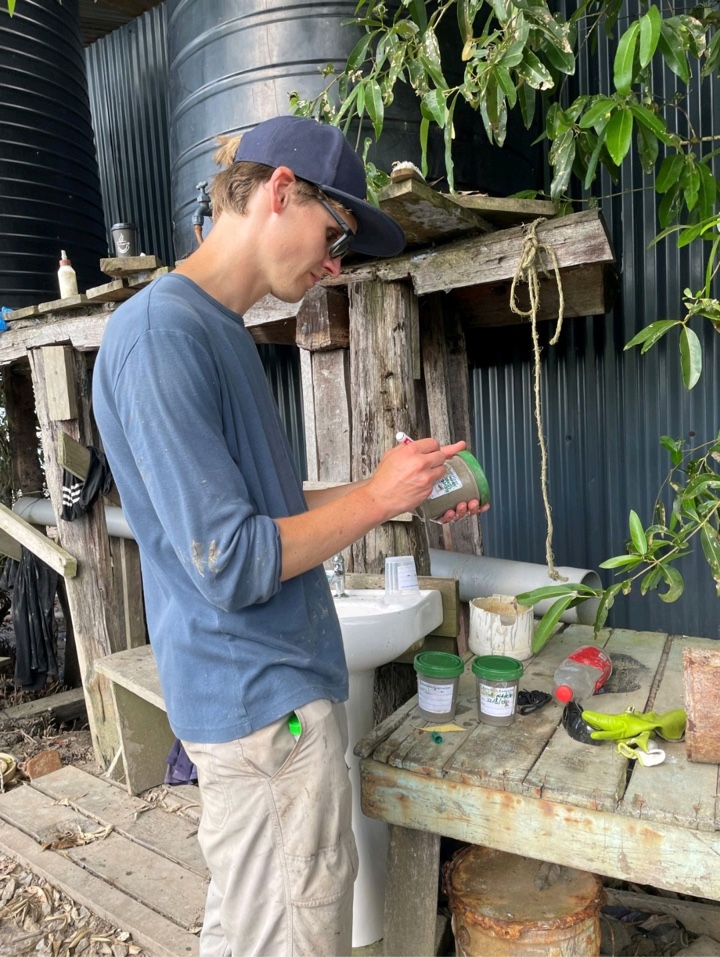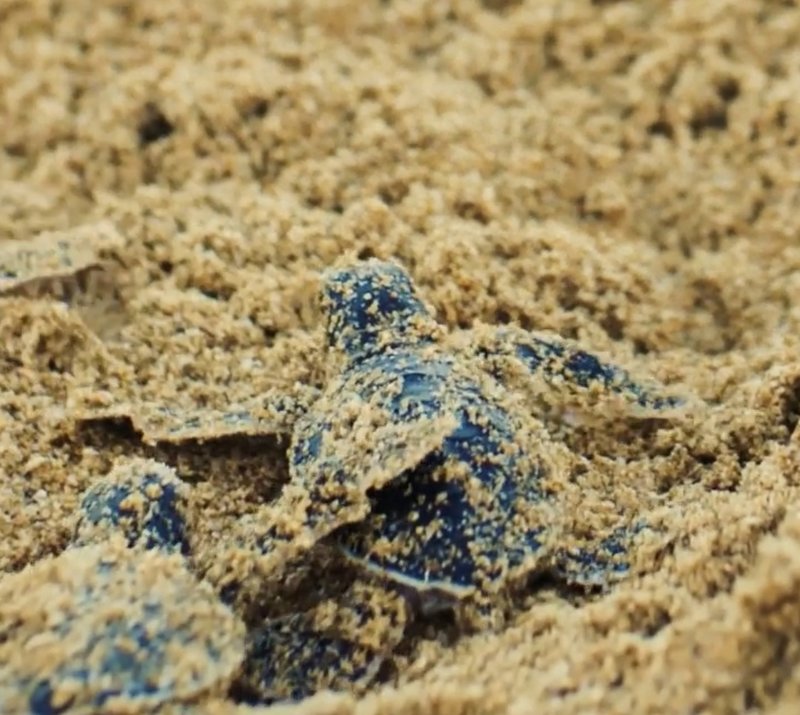Safe nesting area for sea turtles in Paramaribo
The sandy beach at Braamspunt, an important nesting beach for leatherback sea turtles, is in danger of disappearing.
“In Suriname, the nesting population of the leatherback turtle has declined by 97% over the last twenty years,” says Soraya Wijntuin, Oceans Coordinator (WWF Suriname). The beach is eroding because of climate change. Extremely high tides, storms and rising sea levels are causing increasingly frequent floods. High tides are an acute threat for the sea turtles’ nests. The World Wildlife Fund asked Deltares what measures are needed to protect sandy beaches.
“Working with Delft University of Technology, we presented a range of measures that WWF and the Surinamese government can implement at Braamspunt,” says Bob Smits of Deltares. He is involved in this project as a consultant in the area of coastal ecosystems and sediment management.
Braamspunt on the coast of Suriname is one of the largest nesting beaches for sea turtles in the Caribbean. The leatherback turtle, the largest sea turtle in the world and the pride of Suriname, lays eggs on the beach here at night. Braamspunt is also one of the nesting beaches, or nesting areas, for other species of sea turtle such as the green sea turtle, the hawksbill sea turtle and the olive ridley sea turtle. It is located at the extreme western tip of the Commewijne district, where the Suriname and Commewijne rivers exit together to the sea. It is part of an exceptional natural reserve. And not just for sea turtles: it also provides numerous nesting and resting locations for other protected species, such as the jaguar.


Braamspunt provides numerous nesting locations for protected species.
Limiting flood risks
Leatherback turtles are threatened with extinction in the Caribbean region. The beach at Braamspunt is getting significantly smaller every year and it could disappear completely, depriving the leatherback turtle of its nesting area. “Braamspunt is one of two nesting beaches in Suriname and as many as 90% of the leatherback turtles that come to Suriname lay their eggs on this beach,” says Soraya Wijntuin. The Nature Management department of the Ministry of Land Policy and Forestry, which manages the Braamspunt beach, raised the alarm with the World Wildlife Fund (WWF) and asked Deltares for advice about how the beach can recover and not be lost to the sea.
Deltares teamed up with partners for input to address the problem. Project leader Bob Smits of Deltares has spent the past few years studying how coastal systems work and how mangroves can protect the coastal areas of Guyana and Suriname. He studies questions including ways of limiting rapid coastal erosion and natural coastal protection. “Our knowledge about mangrove areas and safe coastal management can be used to mitigate the flood risks at Braamspunt. We are combining our knowledge with the expertise of Delft University of Technology, which has provided input about the right conditions for sandy beaches as nesting beaches for sea turtles,” he says.
“With Delft University of Technology, we presented a range of measures”
Bob Smits, coastal expert

The leatherback turtle is the largest sea turtle in the world and the pride of Suriname.
Short-term measures
The nesting sites of the sea turtles are right on a small sandy beach, which is regularly submerged. “This sandy beach is actually quite unusual in what is largely a silty area,” says Bob Smits. To protect the nests of sea turtles in the short term, Deltares and Delft University of Technology have come up with a range of solutions. “Such as monitoring nesting locations by collecting data using GPS tags on turtles to find out if the animals lay their eggs in the same spot every year. Another thing that helps is flattening out scarps, very steep slopes created on the beach by erosion, to make the beach more accessible to sea turtles. Or moving the nests to higher areas nearby,” are the examples he gives. “We need a better understanding to figure out the consequences of beach erosion,” he says. “Monitoring physical developments on the beach and collecting data are ways to acquire important information, for example about the impact of erosion on the beach. This may be just a drop in a bucket but these measures do help in the short term.”

Bob Smits, a Deltares coastal expert, at work in Suriname.
“Monitoring physical developments on the beach and collecting data are ways to acquire important information”
Bob Smits, Deltares
Climate-adaptive coastal protection
“As a long-term solution, we are looking at how to restore Suriname’s natural coastline as it was about 200 years ago,” says Bob Smits. “Back then, there was a strip of green vegetation with mangroves along the coast. In itself, that provided excellent protection against the tides and it can adapt to sea level rise.” In addition to mangroves, sediment is an important element in the restoration of the natural coastline. “Sand and mud are abundant in the area and they keep the areas high enough for protection purposes and grow in line with the rising water. Mangroves also grow in line with that process and proliferate as long as the bed stays high enough,” he says.
In this way, the ecosystem recovers step by step to provide natural, climate-adaptive coastal protection.




